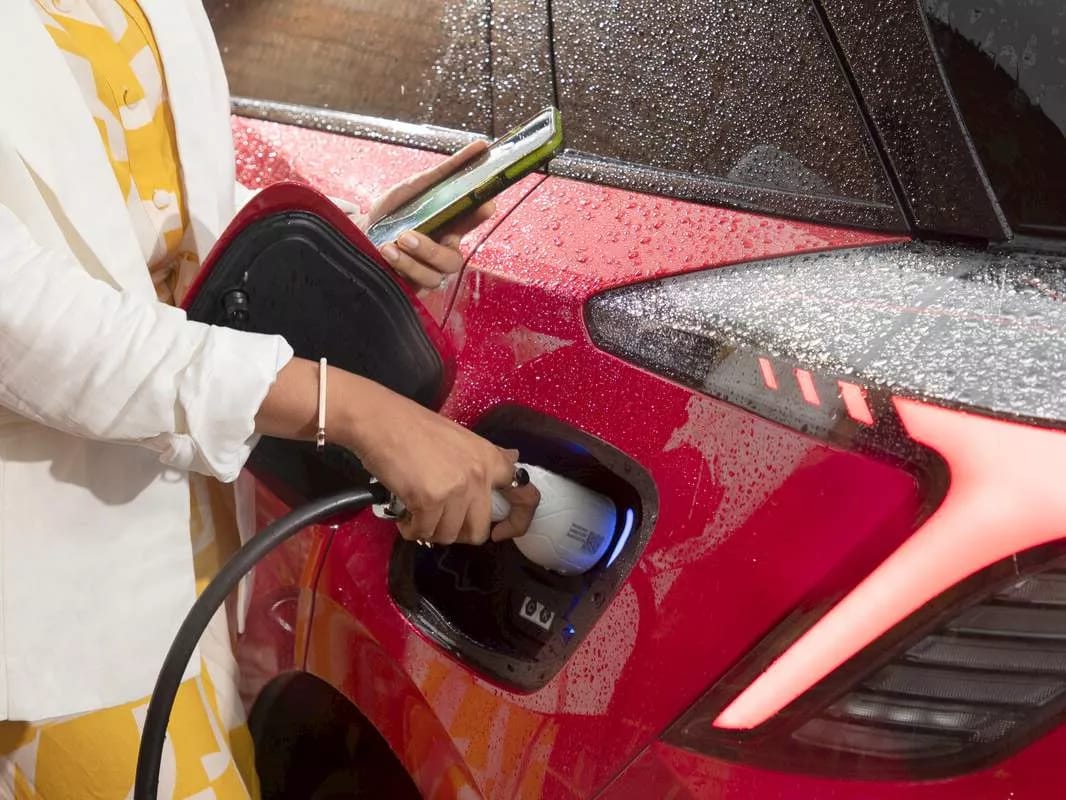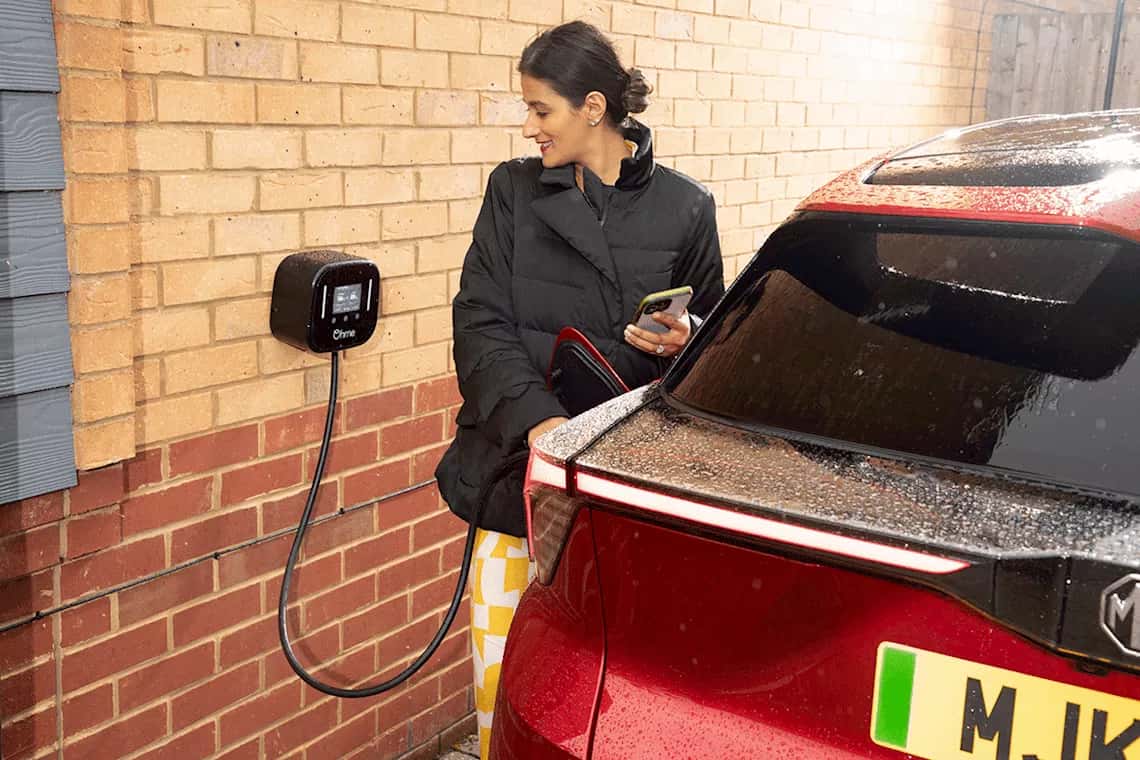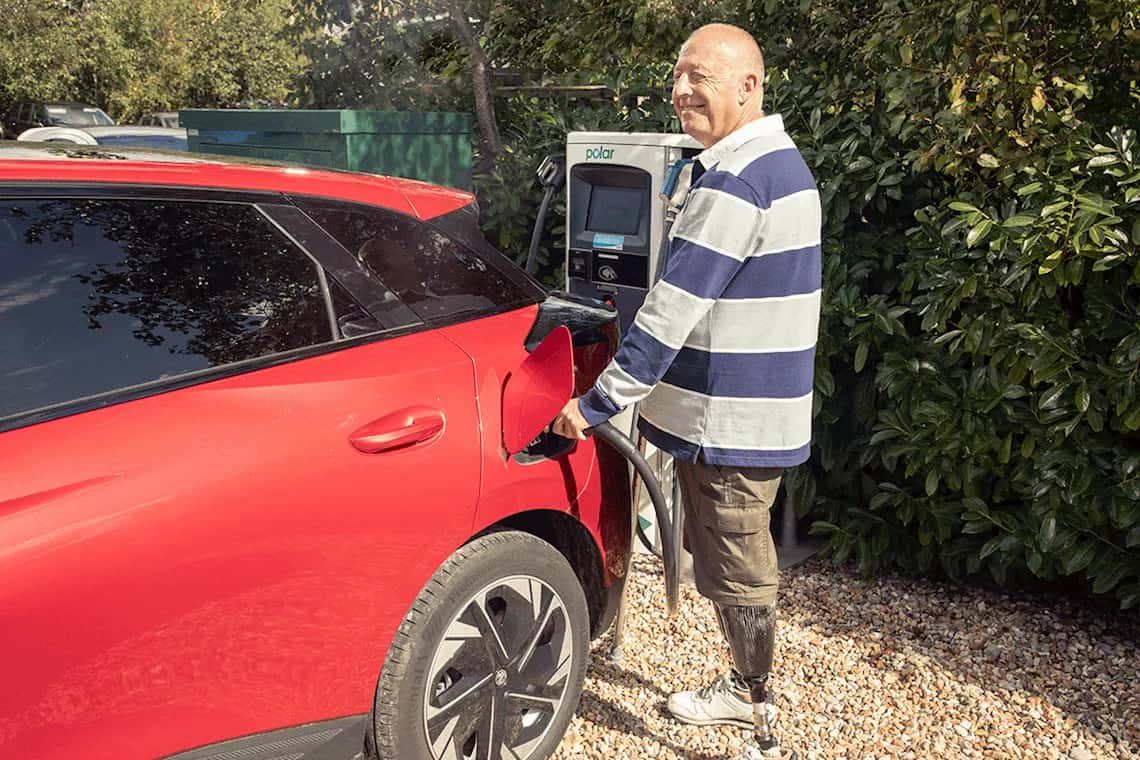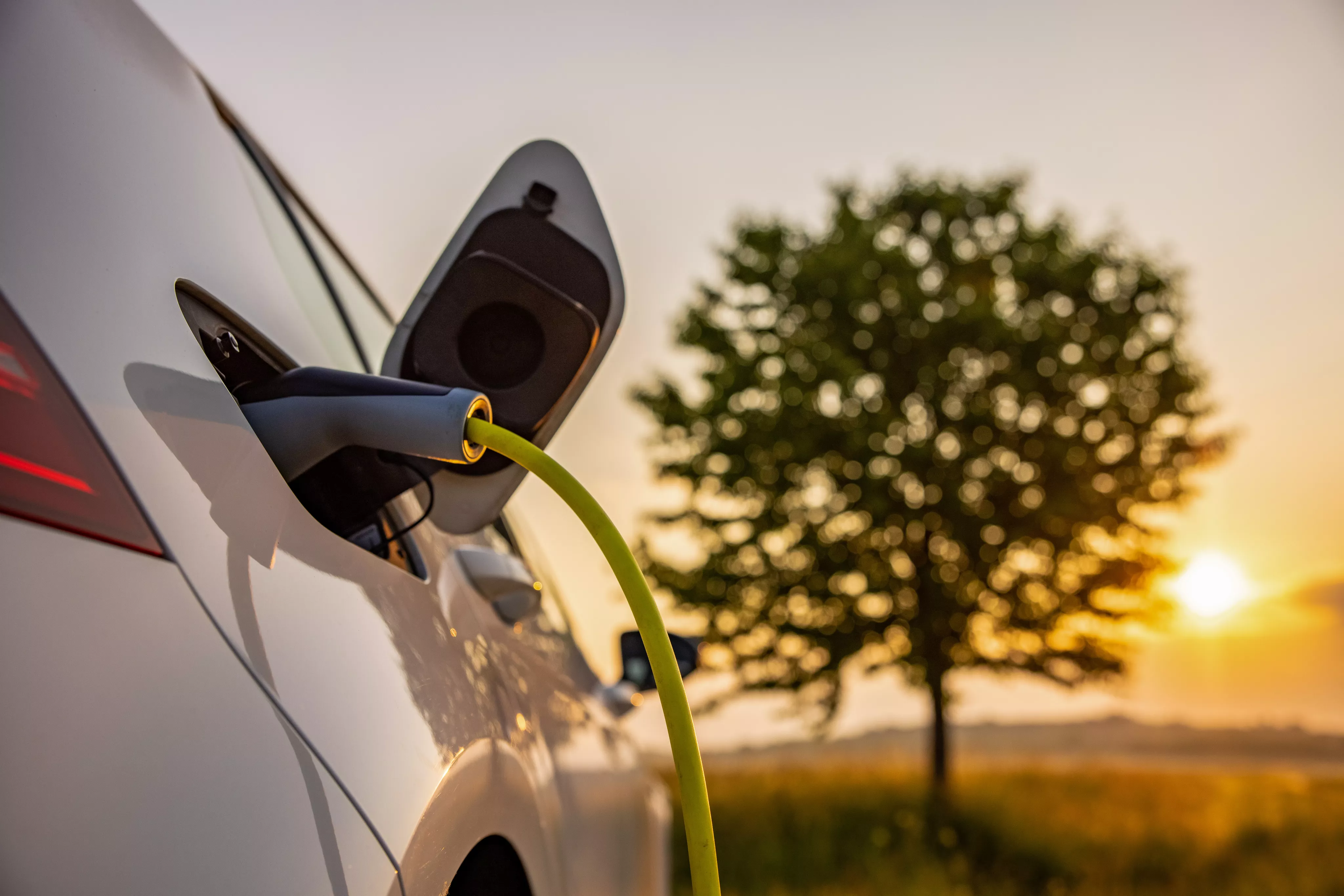Your charging options
Charging electric cars
We’ll take you though the different charging options available. And we’ll help you choose what’s right for you right now.

Charging electric cars
We’ll take you though the different charging options available. And we’ll help you choose what’s right for you right now.
You can either charge your car at home or on the go. We’ll support you with one of these, depending on your circumstances and lifestyle. We’ll also give you access to our Go with the Motability Scheme app. This lets you charge simply, at over 65,000 chargepoints.

This is having a chargepoint installed at your home. You’ll need to have off-street parking, like a driveway or garage.
This can be the cheapest way to charge. Especially if you charge at the right time and get the tariff that works best for you.
It costs about 8 pence per mile on average, on a standard tariff. And 3 pence per mile if you charge off-peak.*
*These figures are based on the average market price and are correct as of 12 October 2023.
How we’ll help: If you can get one, we'll arrange a home chargepoint and a standard installation as part of your lease.

There are over 70,000 chargepoints across the UK*. You can find these in service stations, car parks, supermarkets, and even at the side of the road.
You’ll likely need to use a public chargepoint at some point during your lease.
Charging costs vary, depending on the operator and speed you choose.
*Source: Zapmap(opens in a new window)
How we’ll help: If you cannot get a home chargepoint and it’s your first fully electric car on the Scheme, we’ll offer you a subscription to the bp pulse network.
As well as a home chargepoint or bp pulse subscription, you’ll also get exclusive access to Go with the Motability Scheme app. This gives you access to over 65,000 public chargepoints.
Make sure you know about the costs, how long it takes to charge, and how accessible the chargepoints you’ll use are. This will help you decide if an electric car is right for you.
Charging costs vary depending on whether you’re charging at home or on the public network.
At home, costs will depend on the time of day you charge and your electricity tariff. You’ll also only be able to get slow and fast charging at home. But as your car’s usually parked on your drive overnight, there’s plenty of time to charge.
On the go, costs will depend on the chargepoint operator and speed you choose. In general, the higher the charging speed, measured in kilowatts (kW), the quicker you can charge. But it’ll also be more expensive.
Use our cost calculator on the new EV Hub to see how switching to electric could fit your budget. Try the cost calculator(opens in a new window).
*This is an average based on a 60kWh/69kWh battery. This will differ, depending on your battery capacity.
**These are averages. We cannot guarantee the costs. You might pay up to 20% more for electricity or petrol.
Every electric car on the Scheme comes with the cable you need.
The type of plug your car has might affect which public chargepoints you can use. But lots of new public chargepoints have multiple plug types. The main ones include:
You plug in cables at different chargepoints in different ways:
If you’re not sure using charging cables will suit you, please speak to your dealer. They’ll show you how to connect a car up to a chargepoint.
To help maintain your battery’s health and protect your range, charge your battery so it’s 80% full, unless you’re going on a long journey. And try to keep it above 20%.
Charge every few days, instead of every day, if you can. There are other things you can do to maximise your range too.
We’ve got a list of handy apps to help you with your electric charging journey. It’s a good idea to research which apps you need, so you’re ready to use the chargepoints when you arrive.
Their basic features are free, but you might need to subscribe to use the rest.
Called ‘Go Charge’ for short, this is a new electric car card and app we created with our partner, Paua. You can use them to charge your electric car on the go.
Download on the App Store(opens in a new window)
Get it on Google Play(opens in a new window)
Search, play and pay for charging all in one place. The app can help you find the best places to stop and recharge before you set off.
Download on the App Store(opens in a new window)
Get it on Google Play(opens in a new window)
One of the most popular electric car apps. Use this to see tips, reviews and photos of chargepoints across the world. You do not need to register, and it’s not tied to any charging network.
Download on the App Store(opens in a new window)
Get it on Google Play(opens in a new window)

It's our exciting email series for anyone looking to learn more about electric cars. We’ll explain how they work and show you what life with one could look like. You’ll get one email each week, for eight weeks.
Sign up nowMost electric car drivers need to charge on the public network from time to time, even if they have home charging. Explore and learn more about your options:
Charging on the go
You’ll likely need to charge in public during your lease. We’ll tell you what to think about and how we can support you.
What is bp pulse?
Charge your electric car on a network of public chargepoints. Some of these give you better charging rates and some are free.
Take five minutes to answer some questions and we’ll tell you whether we think an electric car could suit you. Or browse our electric cars.